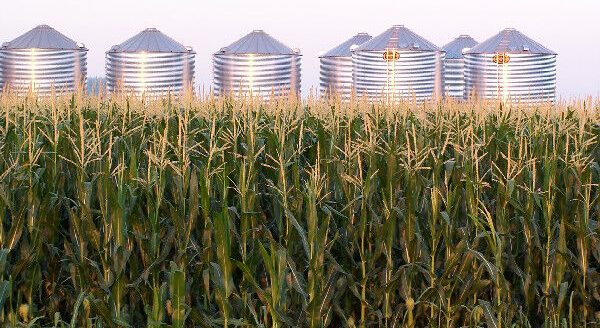Maximizing profit for wheat is one of the most difficult tasks a High Plains grain producer has to tackle because many unknowns from production risks and government programs to geo-political events can tip prices.
From his window in western Kansas, Ron Suppes has a lifetime of experience in taking all those matters into account.
“No matter what the crop is this year the prices are high enough there won’t be any government payments,” said Suppes, a Dighton, Kansas, farmer who is also a member of the Kansas Wheat commission, chairman of the Wheat Innovation Center Research Foundation, and a former chairman of U.S. Wheat Associates. “Producers need to be more intense on marketing this year because of that fact. Their incomes are going to be down because government payments amounted to quite a bit, whether or not we want to admit it.”
Suppes and his wife, Shirley, operate a family farm with about 12,000 acres and their primary crops are wheat and grain sorghum.
Selling any crop is not difficult, Ron Suppes said, if the grower is willing to take the price offered to him; however, that does not ensure profitability. Only a grower can decide if the price he receives will pay his bills and give him a return on his investment. In western Kansas, primarily corn and sorghum have additional markets of feedlots, dairy plants or ethanol plants. Wheat, at times, has also been used as a cattle feed although that is not a regular function.
“Wheat is considered more of a table food item,” Suppes said. “A lot of the time we cannot participate in the feedlot business. That has become a market off and on but you can’t count on that.”
Wheat falls into the categories of bulk commodity and specialty crop production, and he participates in both. The good news is that specialty crop growers are seeing more opportunities as millers are willing to pay premiums for the quality and protein they desire. That market depends on growers being able to segregate their crop, whether it is on the farm or taken to an elevator that is willing to do that.
Kansas producers have a protein facility with PureField Ingredient in Russell, Kansas. Phillipsburg’s Prairie Horizon ingredients facility, now owned by Summit Agricultural Group, Alden, Iowa, will start in the summer 2023 and is expected to be the largest producer of wheat protein in North America.
Suppes said those operations will pay a premium, but the grower has to focus on delivering a high protein content. That process will include purchasing certified wheat and following a process to ensure the quality. The same will hold true for fungicide for insect control, as needed.
He also is committed to bulk commodity outlets where producers generally benefit from higher yields.
Analyst weighs in
Farmers have benefited from a report that ending stocks for wheat in the United States are cut in half from each category of wheat, according to Naomi Blohm, a marketing advisor with Total Farm Marketing by Stewart-Marketing, who writes a monthly column for High Plains Journal and is a regular contributor to the Iowa PBS series “Market to Market.” A steady demand, fewer planted acres and poor crops have created a supply shortage.
“The ending stocks for wheat are trending lower globally as countries had problems last year. The world needs a constant supply of wheat and that constant available supply was disrupted due to poor crops globally.”
The price of hard red winter wheat was above $9 a bushel on Feb. 24, according to the Kansas City Board of Trade.
Like many Americans, farmers and grain traders alike are watching what has unfolded between Russia and Ukraine. As of Feb. 24, Russia had started an invasion into Ukraine.
“If the war should occur and last for a year—then we have a problem as Ukraine and Russia grow and export much of the world’s wheat,” she said.
Suppes said the U.S. wheat price has stayed high because of the widespread drought in the wheat growing regions of the Plains and the turmoil between the Ukraine and Russia. “If it all gets settled and we get 2 feet of snow out here then the prices will be a lot lower, but I don’t think it will fall out of bed.”
Blohm said producers need to watch what happens to the value of the dollar and if it rallies that can impact exports, too.
An extended drought also plays into higher prices but can also make it tricky for a grower who may be unsure of his actual yield, she said. A grower could consider put option strategies as a way to protect unpriced bushels at attractive prices and not have to commit to actually making the cash sale.
Growers can look to their five- to 10-year average yields and have confidence in crop insurance, she said.
“Market a portion of your crop that you feel confident will be there due to historic yields trends,” Blohm said.
When it comes to forward contracting wheat, Blohm believes a producer should not contract more than half of the crop because of yield uncertainty.
Suppes traditionally has limited himself to forward contracting about 10% of his crop but knows producers who have gone up to higher levels with success. Having ample on-farm storage gives him greater flexibility.
With crop insurance price at about $7.04 a bushel it may allow more producers to feel comfortable with those decision. Over the years he has not focused on forward contracting wheat because drought can change the production outlook and could mean having to deliver on those contracts at a loss.
USDA numbers
The U.S. Department of Agriculture has projected the U.S. wheat price would average about $7.05 a bushel in the new crop marketing year for 2021-22, which was up from $5.05 a bushel in old crop marketing year 2020-21 and $4.58 in 2019-20, which was noted by Dan O’Brien, a Kansas State University grain market economist in mid-February. The projection of $7.05 a bushel is the highest in nine years, topped by $7.24 and $7.77 a bushel in marketing years 2011-12 and 2012-13, respectively.
O’Brien recently said when farmers look at marketing wheat, they will have a long list of variables to study. The geopolitical events in Russia and Ukraine, drought in Brazil and other South American countries, plus growers who have wheat in drier regions may bring less aggression in forward contracting crops as he noted in an interview for the “Agriculture Today” podcast segment with Eric Atkinson, a daily program featuring K-State agricultural specialists.
The geopolitical risks are something all grain markets will be subject to in 2022, O’Brien said.
“This year is historic because there are nine grain and oilseeds commodities that have tight ending stocks here in the United States,” Blohm said. “Global ending stocks are also trending lower. The world needs the Northern Hemisphere to have a bumper crop of everything this summer. All weather forecasts will be traded.”
O’Brien also noted in a mid-February analysis, “Whether the North American crop production areas that were harmed in the 2022 U.S. wheat market. Plus, dryness has emerged in the central and southern Plains area of the U.S.—where hard red winter wheat is grown. So, at this time, the resolution of these dry wheat production conditions (or not) will likely be a key issue driver in North American wheat markets in the coming year.”
The worries of U.S. wheat domestic and international users about having adequate U.S. wheat supplies for year 2022 are likely to continue to support U.S. wheat markets through at least spring 2022 and likely into late June-July, he said. Then if the 2022 U.S. wheat production prospects are promising, such as yielding 1.85 billion to 2 billion bushels or more, then wheat market prices are vulnerable to a decline into late summer to fall 2022.
Stay informed
Suppes follows USDA reports closely and reads as much as he can and talks to other producers. He also pays attention to production reports and markets overseas, particularly in Argentina and Brazil.
“I don’t think you can have information overload,” he quipped. “It’s a world market and I have to pay attention to everything that goes on.”
Another piece of advice is to build a relationship with an agronomist who can help the grower with production decisions. He encourages farmers to attend seminars and production schools and to tour the Kansas Wheat Innovation Center, in Manhattan, Kansas, which he said was built by the Kansas Wheat Commission through the state’s checkoff. The center quickly gets information about wheat varieties to growers.
Suppes believes, long term, farmers could benefit from a classification change on how hard winter wheat is classified.
Hard red winter wheat and hard white winter wheat are considered separate classes, but Suppes noted millers have been blending them for years because they recognize their similarities. In June 2021 at a U.S. Wheat meeting in Nashville, Tennessee, Suppers made a motion to be passed by U.S. Wheat and Kansas Wheat to the Federal Grain Inspection Service to create a new hard winter wheat class with subclasses of hard white winter and hard red winter, or alternatively to increase the allowable wheat of other classes of hard white winter wheat in hard red winter wheat to 25%.
In the long run he believes that will help High Plains growers have more opportunities to sell their wheat to markets, which will mean higher prices per bushel.
Dave Bergmeier can be reached at 620-227-1822 or [email protected].



